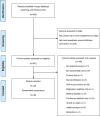Local anaesthetic infiltration for peri-operative pain control in total hip and knee replacement: systematic review and meta-analyses of short- and long-term effectiveness
- PMID: 24996539
- PMCID: PMC4118275
- DOI: 10.1186/1471-2474-15-220
Local anaesthetic infiltration for peri-operative pain control in total hip and knee replacement: systematic review and meta-analyses of short- and long-term effectiveness
Abstract
Background: Surgical pain is managed with multi-modal anaesthesia in total hip replacement (THR) and total knee replacement (TKR). It is unclear whether including local anaesthetic infiltration before wound closure provides additional pain control.
Methods: We performed a systematic review of randomised controlled trials of local anaesthetic infiltration in patients receiving THR or TKR. We searched MEDLINE, Embase and Cochrane CENTRAL to December 2012. Two reviewers screened abstracts, extracted data, and contacted authors for unpublished outcomes and data. Outcomes collected were post-operative pain at rest and during activity after 24 and 48 hours, opioid requirement, mobilisation, hospital stay and complications. When feasible, we estimated pooled treatment effects using random effects meta-analyses.
Results: In 13 studies including 909 patients undergoing THR, patients receiving local anaesthetic infiltration experienced a greater reduction in pain at 24 hours at rest by standardised mean difference (SMD) -0.61 (95% CI -1.05, -0.16; p = 0.008) and by SMD -0.43 (95% CI -0.78 -0.09; p = 0.014) at 48 hours during activity.In TKR, diverse multi-modal regimens were reported. In 23 studies including 1439 patients undergoing TKR, local anaesthetic infiltration reduced pain on average by SMD -0.40 (95% CI -0.58, -0.22; p < 0.001) at 24 hours at rest and by SMD -0.27 (95% CI -0.50, -0.05; p = 0.018) at 48 hours during activity, compared with patients receiving no infiltration or placebo. There was evidence of a larger reduction in studies delivering additional local anaesthetic after wound closure. There was no evidence of pain control additional to that provided by femoral nerve block.Patients receiving local anaesthetic infiltration spent on average an estimated 0.83 (95% CI 1.54, 0.12; p = 0.022) and 0.87 (95% CI 1.62, 0.11; p = 0.025) fewer days in hospital after THR and TKR respectively, had reduced opioid consumption, earlier mobilisation, and lower incidence of vomiting.Few studies reported long-term outcomes.
Conclusions: Local anaesthetic infiltration is effective in reducing short-term pain and hospital stay in patients receiving THR and TKR. Studies should assess whether local anaesthetic infiltration can prevent long-term pain. Enhanced pain control with additional analgesia through a catheter should be weighed against a possible infection risk.
Figures





References
-
- National Joint Registry for England and Wales. 10th Annual Report. Hemel Hempstead: NJR; 2013.
-
- Centers for Disease Control and Prevention. CDC/NCHS National Hospital Discharge Survey. Atlanta, GA: Centers for Disease Control and Prevention; 2010. Number of all-listed procedures for discharges from short-stay hospitals, by procedure category and age: United States.
-
- Wylde V, Rooker J, Halliday L, Blom A. Acute postoperative pain at rest after hip and knee arthroplasty: severity, sensory qualities and impact on sleep. Orthop Traumatol Surg Res. 2011;97:139–144. - PubMed
-
- Chan EY, Blyth FM, Nairn L, Fransen M. Acute postoperative pain following hospital discharge after total knee arthroplasty. Osteoarthritis Cartilage. 2013;21:1257–1263. - PubMed
Publication types
MeSH terms
Substances
Grants and funding
LinkOut - more resources
Full Text Sources
Other Literature Sources
Medical

